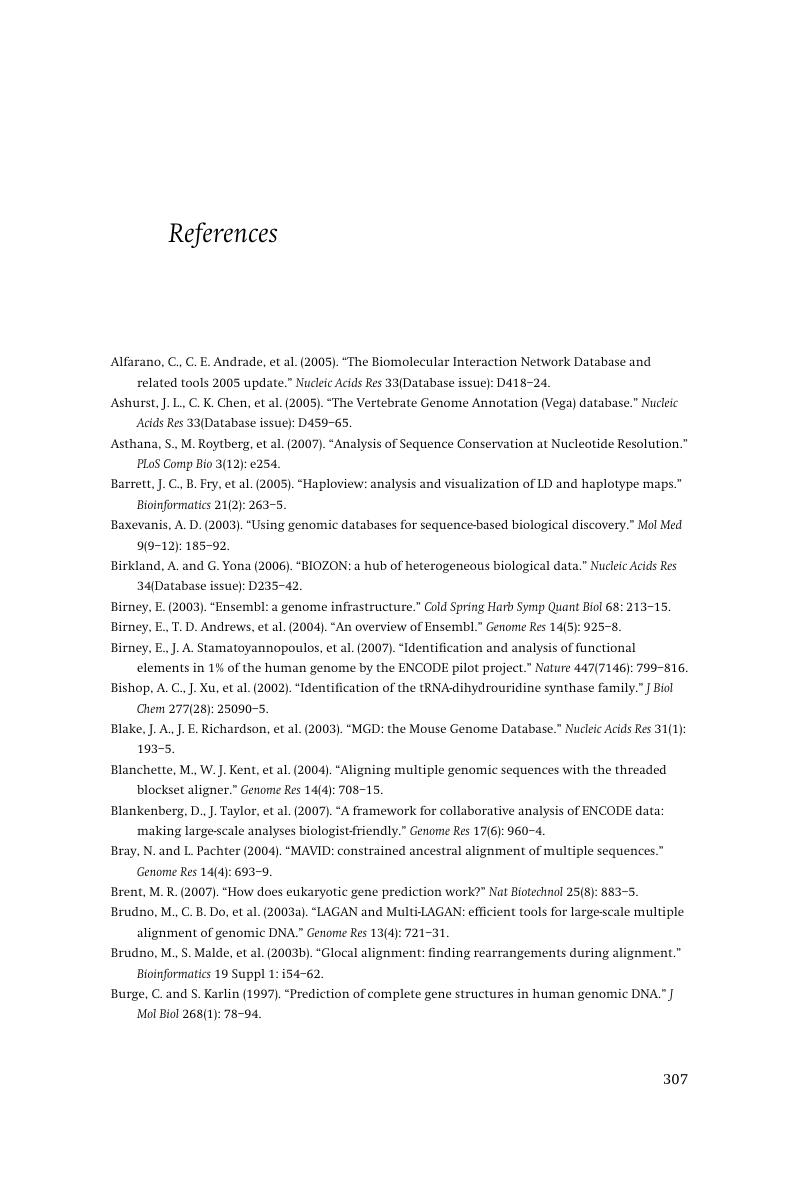Book contents
- Frontmatter
- Contents
- Preface
- 1 The Molecular Biology Data Explosion
- 2 Introduction to Genome Browsing with the UCSC Genome Browser
- 3 Browsing with Ensembl, MapViewer, and Other Genome Browsers
- 4 Interactive Genome-Database Batch Querying
- 5 Interactive Batch Post-Processing with Galaxy
- 6 Introduction to Programmed Querying
- 7 Using the Ensembl API
- 8 Programmed Querying with Ensembl, Continued
- 9 Introduction to the UCSC API
- 10 More Advanced Applications Using the UCSC API
- 11 Customized Genome Databases
- 12 Genomes, Browsers, Databases – The Future
- Appendix 1 Coordinate System Conventions
- Appendix 2 Genome Data Formats
- Appendix 3 UCSC Table Formats
- Appendix 4 Genomic Sequence Alignments
- Appendix 5 Program Code README File
- Appendix 6 Selected General References for Genome Databases and Browsers
- Appendix 7 Online Documentation and Useful Web Sites for Genome Databases and Browsers
- Appendix 8 Glossary of Biological and Computer Terms Used in the Text
- References
- Index
- References
References
Published online by Cambridge University Press: 14 May 2010
- Frontmatter
- Contents
- Preface
- 1 The Molecular Biology Data Explosion
- 2 Introduction to Genome Browsing with the UCSC Genome Browser
- 3 Browsing with Ensembl, MapViewer, and Other Genome Browsers
- 4 Interactive Genome-Database Batch Querying
- 5 Interactive Batch Post-Processing with Galaxy
- 6 Introduction to Programmed Querying
- 7 Using the Ensembl API
- 8 Programmed Querying with Ensembl, Continued
- 9 Introduction to the UCSC API
- 10 More Advanced Applications Using the UCSC API
- 11 Customized Genome Databases
- 12 Genomes, Browsers, Databases – The Future
- Appendix 1 Coordinate System Conventions
- Appendix 2 Genome Data Formats
- Appendix 3 UCSC Table Formats
- Appendix 4 Genomic Sequence Alignments
- Appendix 5 Program Code README File
- Appendix 6 Selected General References for Genome Databases and Browsers
- Appendix 7 Online Documentation and Useful Web Sites for Genome Databases and Browsers
- Appendix 8 Glossary of Biological and Computer Terms Used in the Text
- References
- Index
- References
Summary

- Type
- Chapter
- Information
- Genomes, Browsers and DatabasesData-Mining Tools for Integrated Genomic Databases, pp. 307 - 312Publisher: Cambridge University PressPrint publication year: 2008



